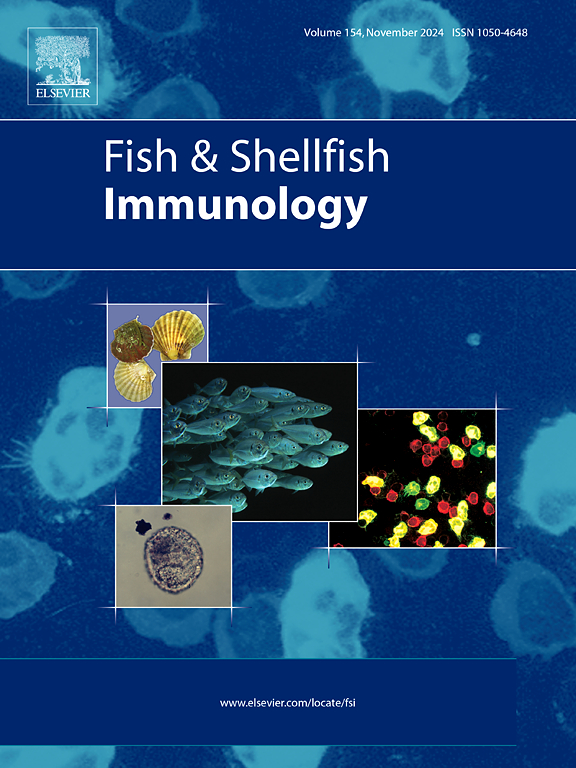Structure, function, and therapeutic potential of defensins from marine animals
IF 4.1
2区 农林科学
Q1 FISHERIES
引用次数: 0
Abstract
Defensins are a type of host defense peptides (HDPs), belonging to a family of cationic antimicrobial peptides (AMPs) that exhibit activity against various infectious microorganisms including bacteria, viruses, and fungi. Due to the uniqueness of the ocean's ecological environment, defensins from marine animals have a rich biodiversity and some special molecular features so as to possess significant potential. They exert antibacterial activity by binding to cell membranes, forming specific channels, or interacting with lipid II. These peptides can be utilized through various nanotechnologies, such as antimicrobial peptide-antibiotic conjugates, nanonets, and nanoparticle-based drug delivery systems, to enhance their antibacterial activities and broaden their spectra. This review summarizes the structural characteristics and classification of defensins from marine animals (mainly fish and shellfish), outlines their evolutionary trajectory, and discusses their antibacterial, antiviral, immune-regulation, and reproductive functions. Finally, the future therapeutic potential of defensins from marine animals is highlighted for fighting antibiotic resistance and treating other diseases. This review provides new insights into the future development of marine resources and natural peptides.
海洋动物防御素的结构、功能和治疗潜力
防御素是宿主防御肽(hdp)的一种,属于阳离子抗菌肽(amp)家族,对包括细菌、病毒和真菌在内的各种感染性微生物具有活性。由于海洋生态环境的独特性,海洋动物的防御素具有丰富的生物多样性和一些特殊的分子特征,具有巨大的潜力。它们通过与细胞膜结合、形成特定通道或与脂质II相互作用发挥抗菌活性。这些肽可以通过各种纳米技术来利用,如抗菌肽-抗生素偶联物、纳米网和基于纳米颗粒的药物传递系统,以增强其抗菌活性并拓宽其光谱。本文综述了海洋动物(主要是鱼类和贝类)防御素的结构特征和分类,概述了它们的进化轨迹,并讨论了它们的抗菌、抗病毒、免疫调节和生殖功能。最后,强调了海洋动物防御素在对抗抗生素耐药性和治疗其他疾病方面的未来治疗潜力。本文综述为今后海洋资源和天然多肽的开发提供了新的思路。
本文章由计算机程序翻译,如有差异,请以英文原文为准。
求助全文
约1分钟内获得全文
求助全文
来源期刊

Fish & shellfish immunology
农林科学-海洋与淡水生物学
CiteScore
7.50
自引率
19.10%
发文量
750
审稿时长
68 days
期刊介绍:
Fish and Shellfish Immunology rapidly publishes high-quality, peer-refereed contributions in the expanding fields of fish and shellfish immunology. It presents studies on the basic mechanisms of both the specific and non-specific defense systems, the cells, tissues, and humoral factors involved, their dependence on environmental and intrinsic factors, response to pathogens, response to vaccination, and applied studies on the development of specific vaccines for use in the aquaculture industry.
 求助内容:
求助内容: 应助结果提醒方式:
应助结果提醒方式:


